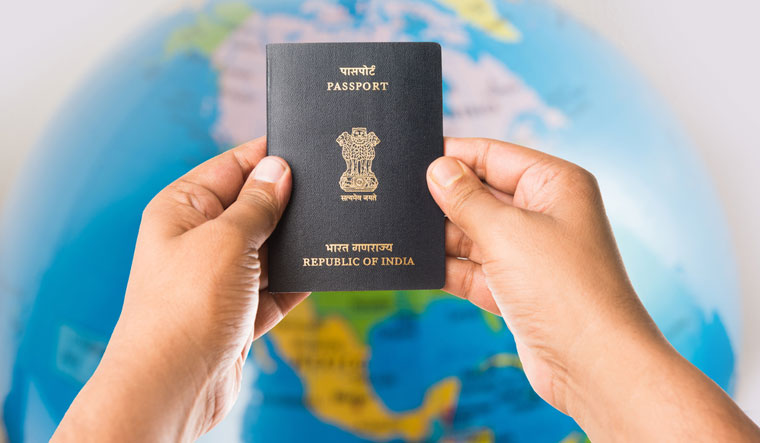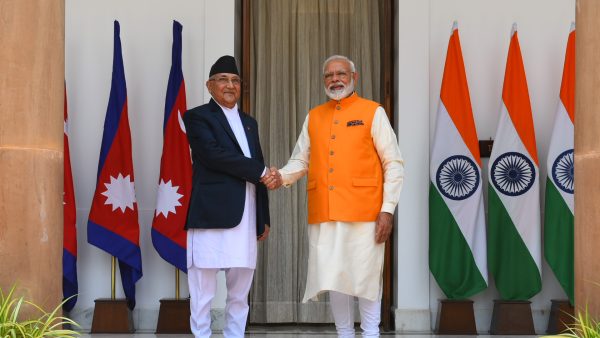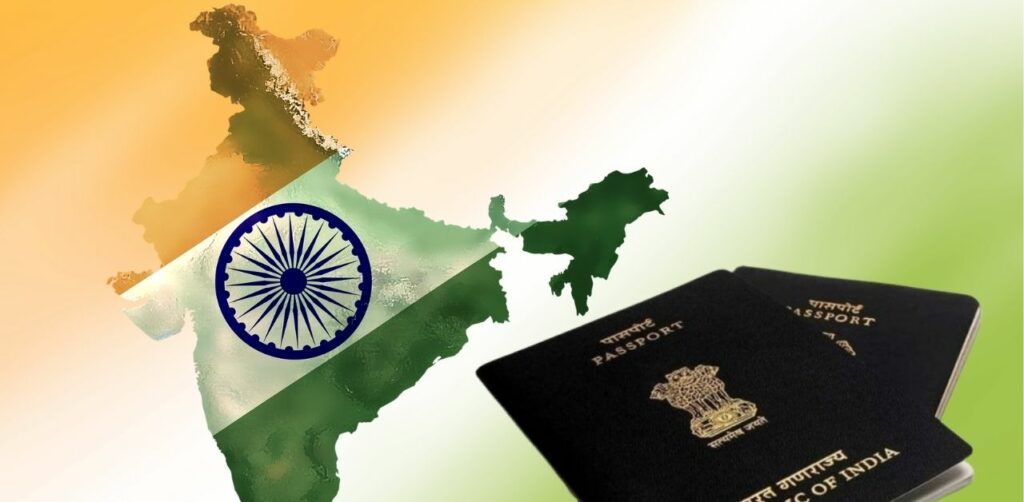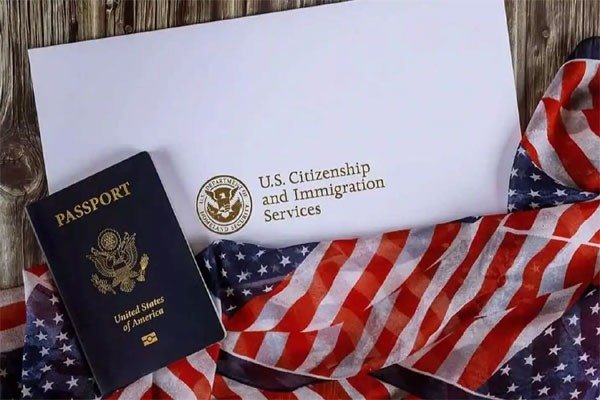Q: Can an American citizen get Indian citizenship in 2025?
A: Yes, an American citizen may obtain Indian citizenship through either registration or naturalization under the Citizenship Act, 1955. The process involves fulfilling specific residency requirements, submitting legal documents, and obtaining final approval from the Ministry of Home Affairs (MHA), Government of India.
Contents
- 1 🧾 Overview: Indian Citizenship for Foreign Nationals
- 2 🧑⚖️ Who Can Apply – Eligibility Criteria for American Citizens
- 3 🛣️ Legal Routes to Acquire Indian Citizenship
- 4 📄 Documents Required for Citizenship Application
- 5 📝 Step-by-Step Process for American Citizens to Get Indian Citizenship
- 6 🏛️ Key Government Authorities Involved
- 7 🌍 GEO Optimization – India & U.S. Relevance
- 8 📌 Key Takeaways
- 9 ❓ Frequently Asked Questions (FAQs)
- 10 🔗 Related Articles
🧾 Overview: Indian Citizenship for Foreign Nationals
The Citizenship Act, 1955, governs how foreign nationals, including U.S. citizens, may acquire Indian citizenship. India does not permit dual citizenship, meaning the applicant must renounce their American citizenship before being granted Indian citizenship.
Two primary legal pathways are available:
- By Registration (Section 5 of the Citizenship Act)
- By Naturalization (Section 6 of the Citizenship Act)
These routes require a lawful stay in India for a defined period and fulfillment of specific conditions prescribed by Indian law.
🧑⚖️ Who Can Apply – Eligibility Criteria for American Citizens
To become eligible for Indian citizenship, an American citizen must:
- Be ordinarily resident in India for 12 years (preceding the application)
- Have lived in India continuously for the last 12 months before applying
- Be of good character and legally residing in the country
- Have adequate knowledge of one of the Indian languages
- Renounce their existing U.S. citizenship upon approval
Note: Applicants married to Indian citizens or of Indian origin may apply under the registration route.
🛣️ Legal Routes to Acquire Indian Citizenship
🔹 1. Citizenship by Registration (Section 5)
This method is applicable if:
- The applicant is married to an Indian citizen and residing in India for at least 7 years
- Either parent was an Indian citizen
- The applicant is of Indian origin and has lived in India for 7 years
Application Form: Form IV
🔹 2. Citizenship by Naturalization (Section 6)
Applicable to individuals who have:
- Resided in India for at least 12 years (aggregate)
- Held a Long-Term Visa (LTV)
Application Form: Form X
📄 Documents Required for Citizenship Application
To initiate the citizenship process, the following documents are typically required:
- Valid U.S. Passport
- Long-Term Visa (LTV) or Residential Permit in India
- Aadhaar Card (if available)
- Proof of Indian origin or marriage certificate
- Address and ID proof
- Police Clearance Certificate (PCC)
- Passport-sized photographs
- Language proficiency declaration
- Renunciation Certificate of U.S. citizenship (post approval)
📝 Step-by-Step Process for American Citizens to Get Indian Citizenship
- Visit Official Portal: https://indiancitizenshiponline.nic.in
- Register & Fill Application (Form IV or X based on eligibility)
- Upload Required Documents in PDF format
- Schedule Appointment at District Magistrate or FRRO Office
- Attend Police Verification & IB Clearance
- Await MHA Decision – Final approval may take 12–24 months
- Submit Renunciation of U.S. Citizenship
- Receive Certificate of Indian Citizenship
🏛️ Key Government Authorities Involved
- Ministry of Home Affairs (MHA) – Final approval body
- FRRO (Foreigners Regional Registration Office) – Verification & visa matters
- District Magistrate (DM) Office – Local processing
- Indian Embassy (if abroad) – Document attestation
🌍 GEO Optimization – India & U.S. Relevance
This process applies to:
- U.S. citizens currently residing in New Delhi, Mumbai, Bengaluru, Chennai, and other Indian cities
- Persons of Indian Origin (PIOs) or OCI holders from the U.S. looking for full citizenship
- Foreign spouses settled in India
📌 Key Takeaways
- American citizens may obtain Indian citizenship by naturalization or registration
- A minimum 7–12 years of legal residence in India is essential
- Dual citizenship is not allowed under Indian law
- MHA and FRRO play critical roles in the process
- Online application is available at indiancitizenshiponline.nic.in
❓ Frequently Asked Questions (FAQs)
Q1. Can I keep my U.S. passport after becoming an Indian citizen?
No. India does not allow dual citizenship. You must renounce your U.S. citizenship.
Q2. How long does it take to become an Indian citizen as a U.S. citizen?
Typically, 12 to 24 months, depending on verification and clearances.
Q3. Can an OCI holder apply for Indian citizenship?
Yes, if they meet eligibility under registration or naturalization.
Q4. Is it mandatory to speak an Indian language?
Yes, basic knowledge of any one Indian language is a requirement.
Q5. Can I apply from the U.S. or only from India?
You must be a resident of India for a specific period to apply.
🔗 Related Articles
- [Difference Between OCI and Indian Citizenship]
- [How to Apply for a Long-Term Visa in India]
- [Step-by-Step Guide to Renounce U.S. Citizenship for Indian Citizenship]
📣 Are you an American citizen considering Indian citizenship? Follow our official guides and step-by-step checklists at CitizenJankari.com to make your application smoother.
For questions or assistance, contact us at: citizenjankari@gmail.com
Shiv Shankar Kumar Shah is the founder of CitizenJankari.com, a digital content creator and SEO specialist with 8+ years of experience in blogging and online publishing. Passionate about simplifying complex government processes, he writes bilingual content (Hindi + English) to empower citizens with accurate, easy-to-understand information on Aadhaar, PAN, Voter ID, and Indian citizenship.
When he’s not researching government policies, Shiv loves helping others build financially free digital careers through blogging and affiliate marketing.
📍Based in New Delhi, India
📧 Contact: citizenjankari@gmail.com






